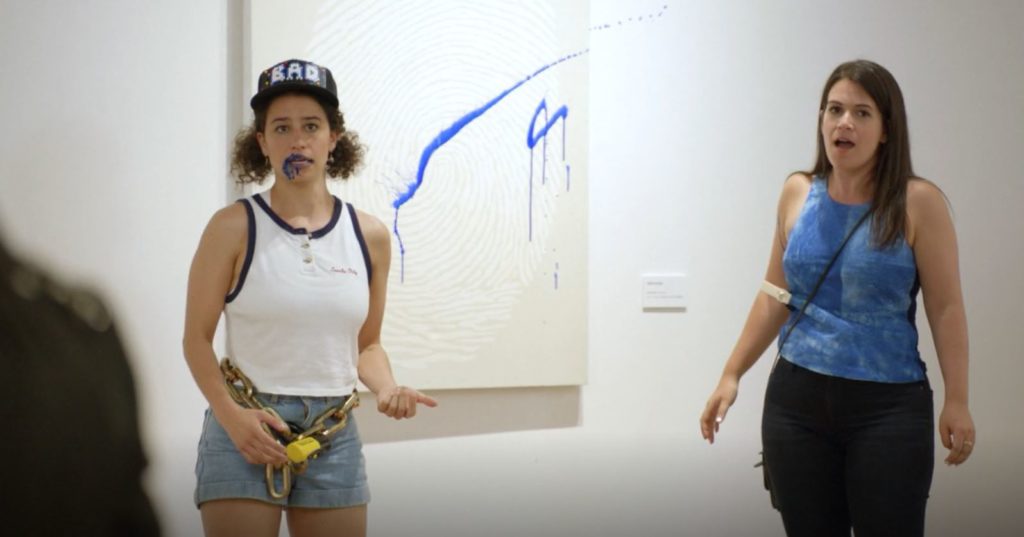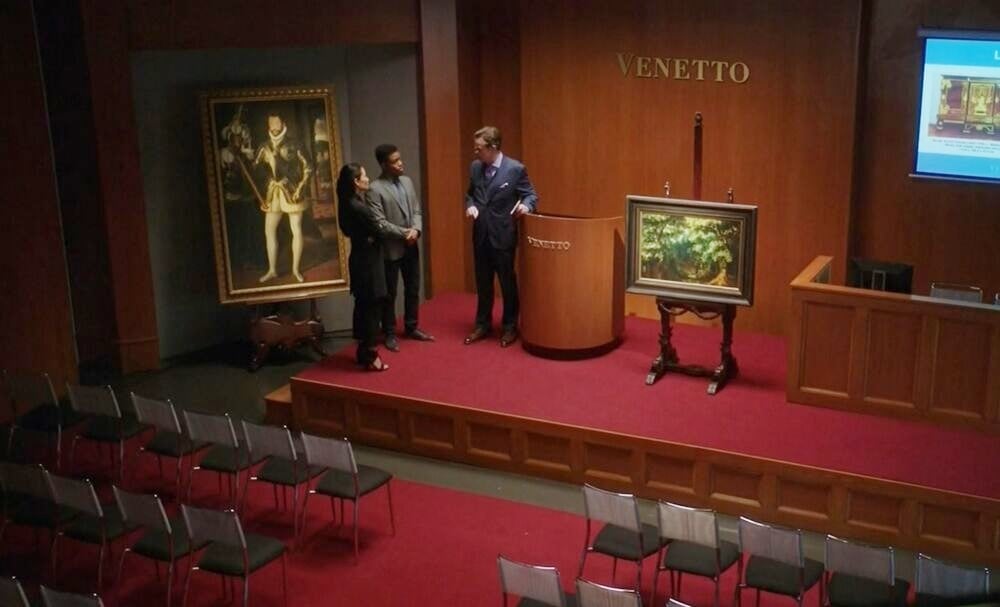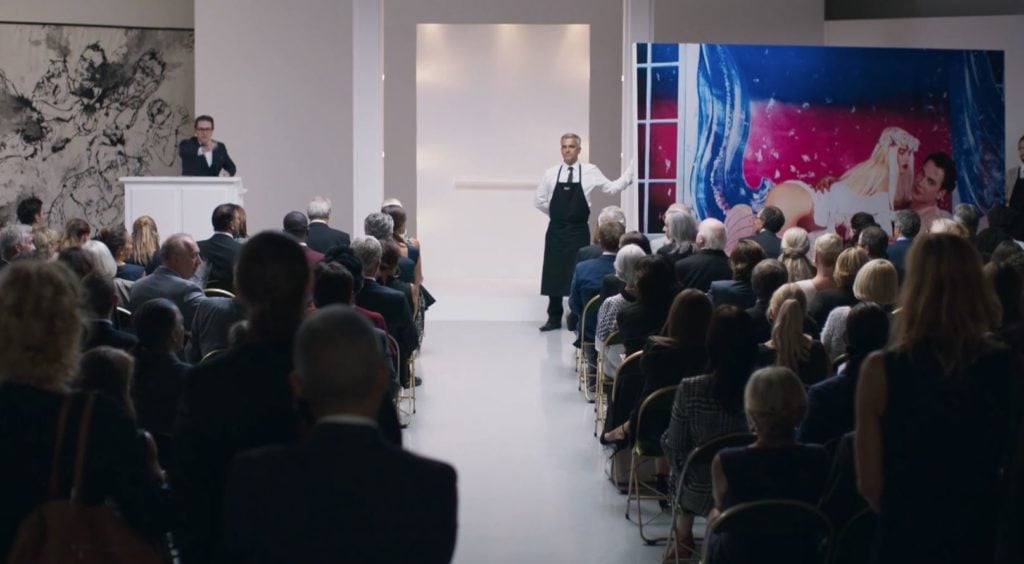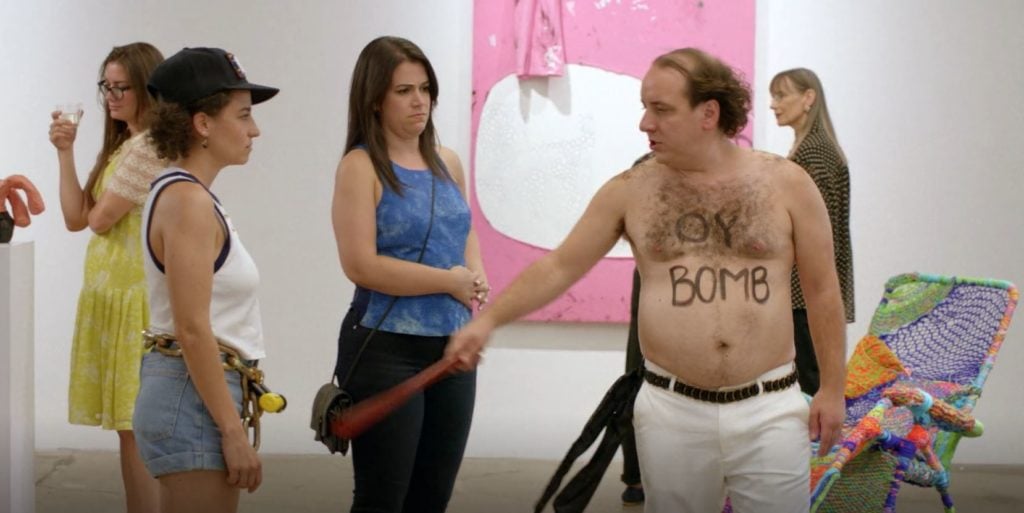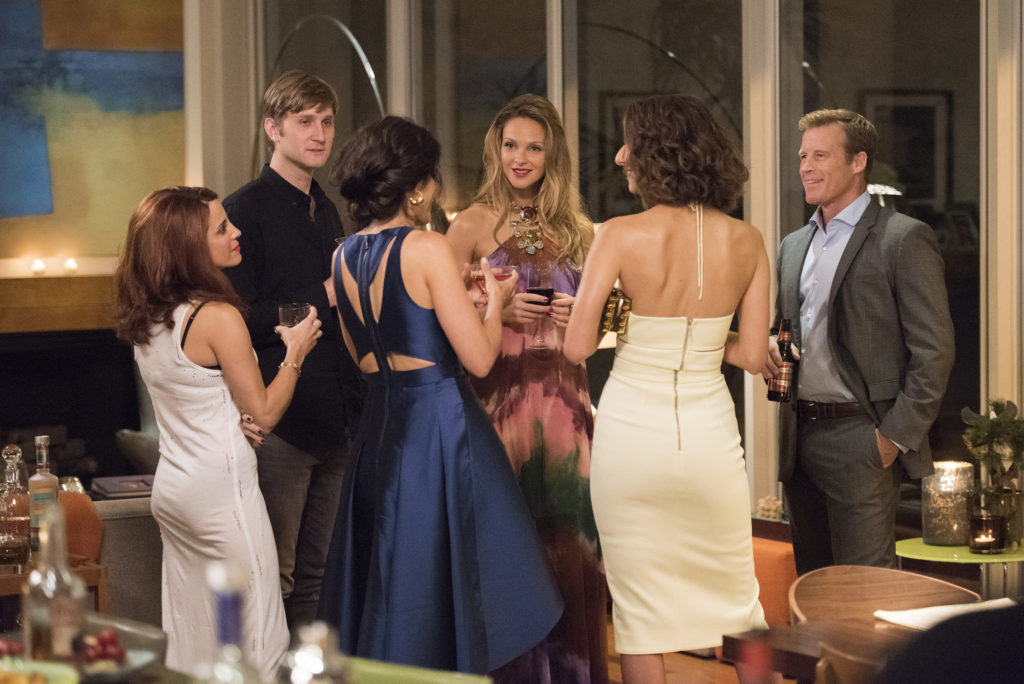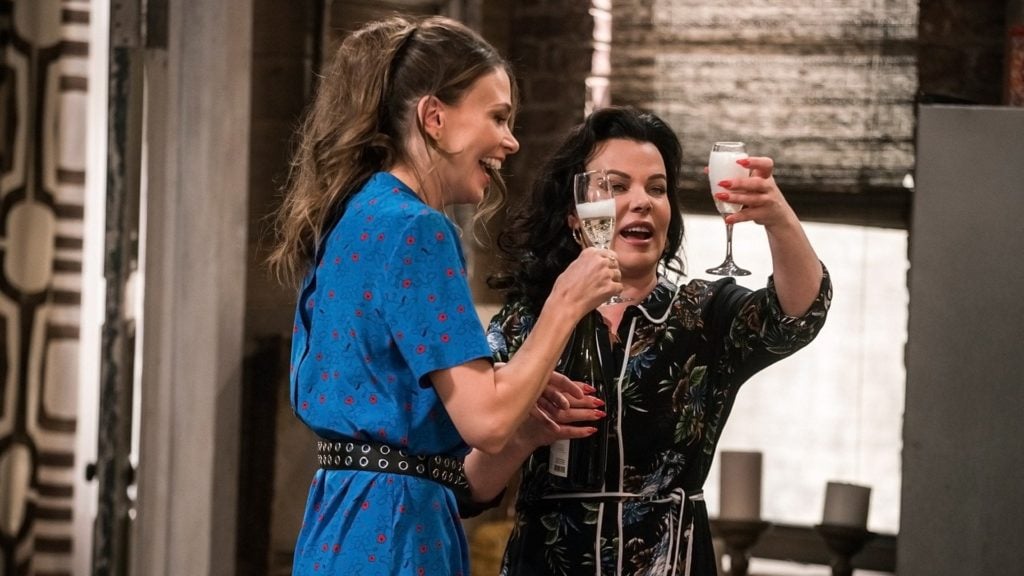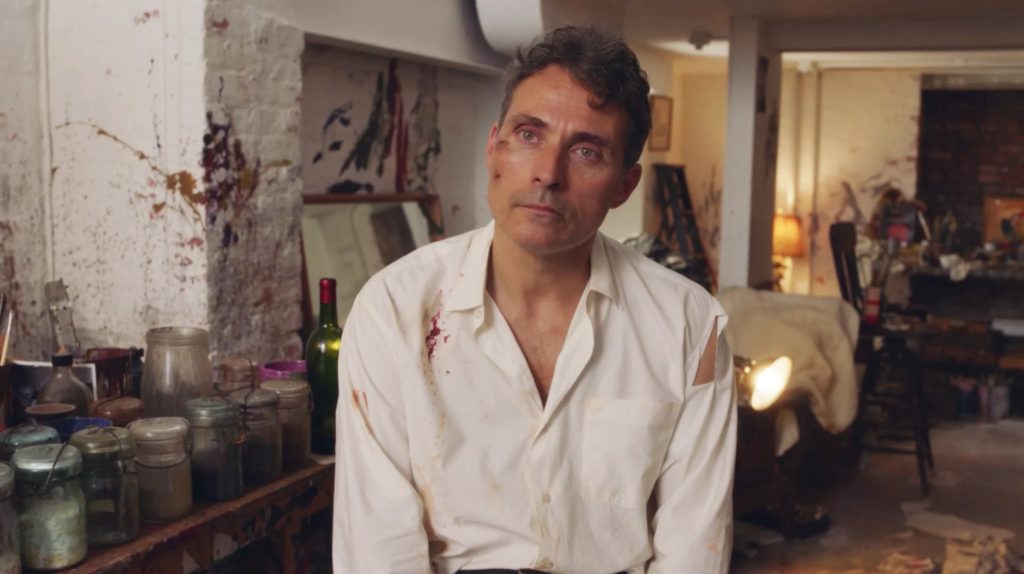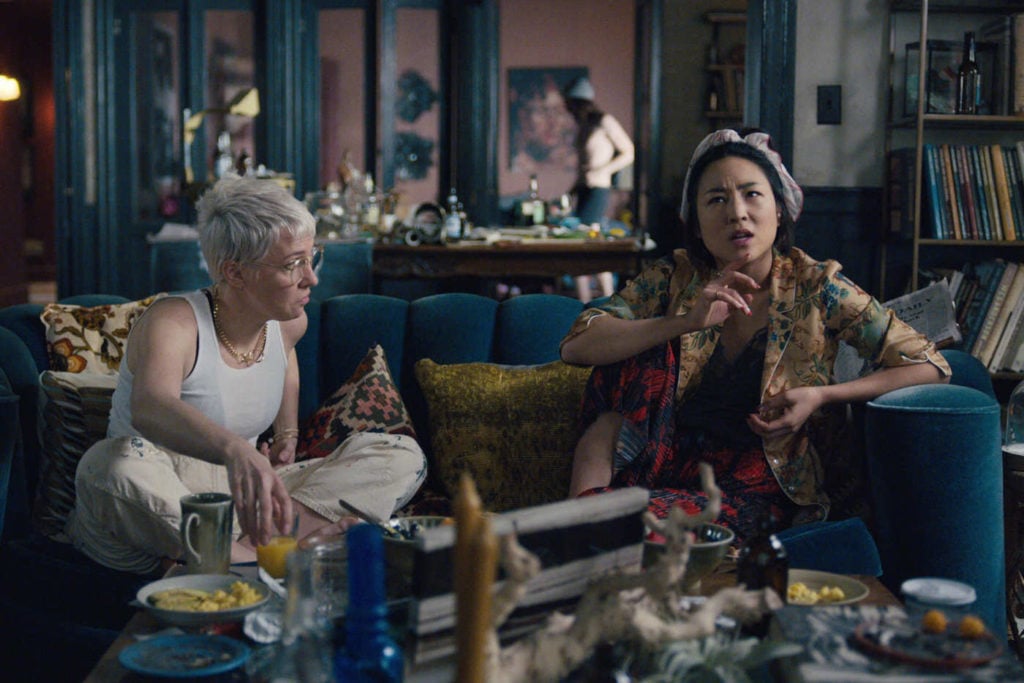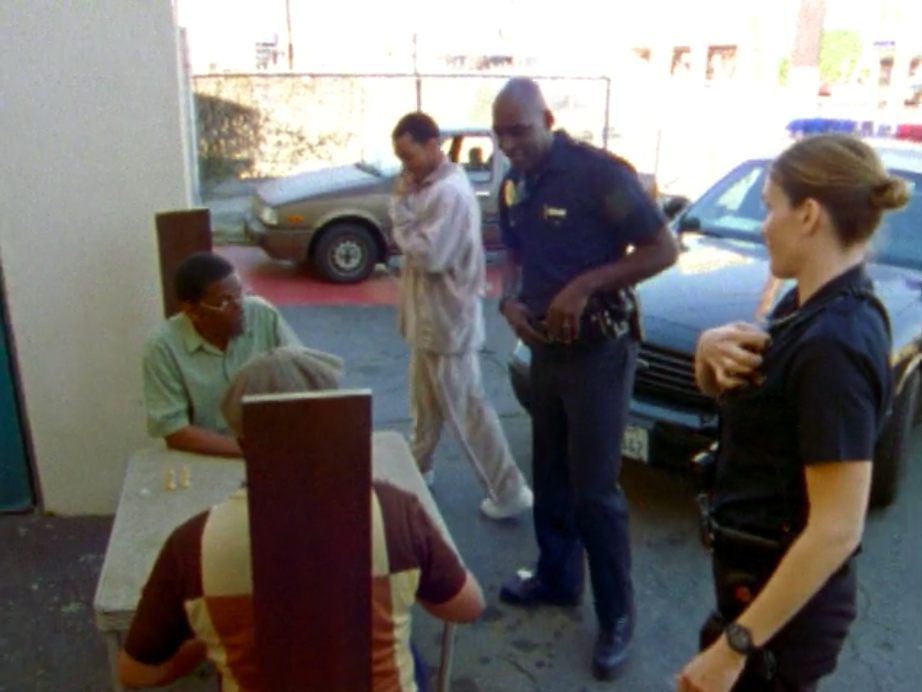Art World
Does TV Ever Get the Art World Right? Here Are 15 Memorable Episodes That Try, Ranked by Believability
Television is rife with portrayals of the art world. Here are our favorites, ranked from the most ridiculous to the totally realistic.
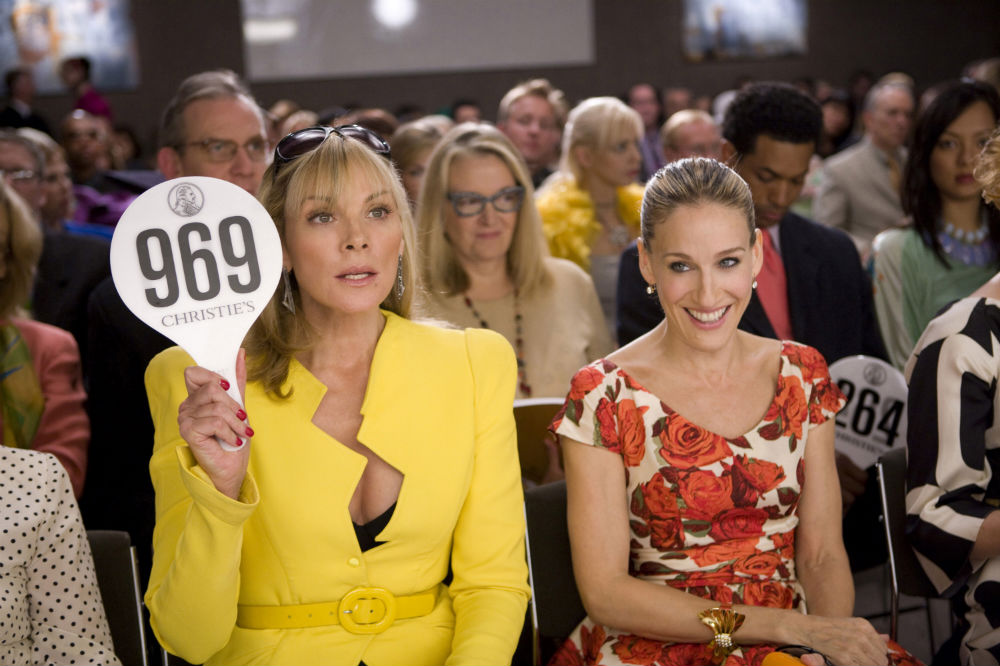
Say what you will about the art world, it’s rife with cinematic possibilities, from cutthroat art dealers and larger-than-life art stars to multi-million dollar sales and high-stakes heists. So it comes as no surprise that many television shows have plumbed the art universe for story lines—some with more success than others.
Here, we take a look at 15 art-inspired television episodes and see just how true to real life they are—from the most outrageous and unbelievable plot lines to those that ring true to our editors’ discerning eyes.
1. Covert Affairs, “What Is and What Should Never Be” (2010)
CIA field operative Annie Walker (Piper Perabo) has an undercover job in “acquisitions” at the Smithsonian. She attends an auction where a Thomas Cole painting goes for $10 million, which she knows is way too much. (How right she is: his auction record is $1.5 million, according to the artnet Price Database.) It turns out it’s only because the painting’s crate holds… a schematic for a Russian missile guidance system! Bodies pile up as she tracks down the bidder, who’s one of the bad guys.
Unfortunately, the bid increments are all wrong, the way the bad guys call attention to themselves with the outsize bid is ridiculous, and Walker’s “acquisitions” job doesn’t actually exist.
Believability rank: 1/10
2. The Blacklist, “T. Earl King VI” (2015)
A family has run a secret auction house for the past 200 years, selling looted artifacts and stolen artworks alongside weapons technology and, of course, the occasional hostage. As the plot turns, agent Elizabeth Keen (Megan Boone) must go undercover to expose the diabolical operation. She assumes the identity of an art authenticator looking to bid on a Vincent van Gogh canvas, recognizable as View of the Sea at Scheveningen, which was really stolen from Amsterdam’s Van Gogh Museum in 2002. (It’s just one of a number of artworks that have cameoed on the show.)
“It’s rumored Van Gogh actually painted it at the beach, and up close you can see the grains of sand, bonded to the canvas,” Liz tells a member of the King family. “Remarkable.”
Remarkable, indeed. In real life, the theft of the Scheveningen remained on the FBI’s “Top Ten” list of unsolved crimes until 2016, when it was recovered, along with another work by the artist, in Naples, where they were in the hands of the mafia, not an illicit auction house. The paintings went back on view at the Van Gogh Museum earlier this year.
Believability rank: 2/10
3. Forever, “Hitler on the Half Shell” (2015)
ABC canceled Forever after only one season, but one of the show’s most memorable episodes was clearly inspired by a major art-world scandal. Henry Morgan (Ioan Gruffudd), an immortal medical examiner who solves murders, is called to the scene of the murder of Karl Haas, who has been bludgeoned to death with “an Andolini Venus” statue.
Haas, it is discovered, is the TV-version of Cornelius Gurlitt, having inherited a priceless collection of artworks amassed by his father on behalf of the Nazis. Unlike his real-life counterpart, however, Haas was actively trying to restitute the looted artworks, including a “priceless” Claude Monet water lily canvas that the ageless Henry, who lived through the Impressionist movement, identifies as dating to “1889, judging by its style.”
Another key work in the collection is The Angel of Death, by the fictional Max Brenner (unless it is the “Max Brenner” of “Chocolate by the Bald Man” fame?). In a particularly unbelievable turn, the police run a DNA test against ARN, or Artist Registry Network, a database of 20th-century artists’ DNA samples used to identify unsigned work and find a match to Brenner’s grandson, himself an artist who slices up cows in a creepy warehouse to create his blood-spattered canvases, but is not, in fact, the killer.
Believability rank: 3/10
4. Gossip Girl, “Belles de Jour” (2010)
New York socialites Blair Waldorf (Leighton Meester) and Serena van der Woodsen (Blake Lively) arrive in Paris for the summer, single and ready to mingle.
The art star of this episode is Édouard Manet, as Blair loiters in front of the artist’s Le Déjeuner sur l’herbe (1862–63) at the Musée d’Orsay every day hoping to meet someone with a similar romantic bent. Lo and behold, along comes Louis Grimaldi (Hugo Becker), a member of the Monégasque royal family, who confesses that he’s been trying to work up the courage to speak to her for weeks. The Prince quickly becomes Blair’s latest suitor. The rest is Gossip Girl history.
The meeting is most unlikely—a sense which is uncannily echoed in the painting: The lack of depth to the background and the bright light to the fore gives the impression the scene is being modeled in a studio. Perhaps, then, Manet’s presence isn’t simply a vapid plot device, but a subtle hint that their meeting might not be quite as impromptu as Blair naively thinks.
Believability rank: 4/10
5. Melrose Place, “Déjà Vu All Over Again” (1997)
Amanda Woodward (Heather Locklear) takes her new love interest, Kyle McBride (Rob Estes), to the exhibition opening of “Uncommon Sense” at the Museum of Contemporary Art in Los Angeles (MOCA).
The scene begins with Kyle staring intensely at a dark painting with swatches of bright blue and white markings resembling flashes of light. Amanda walks over to Kyle and reads the title of the painting: “Fireflies.” She then quips, “Looks like a bunch of dots to me.”
Kyle goes on to eloquently describe the “dots” in the painting as “explosions,” and surmises that the work is a rendering of the “bombing of Baghdad.”
But here’s what’s striking about the episode: The exhibition “Uncommon Sense” was real, and highlighted artworks that were specifically crafted as props for the ’90s primetime soap opera by the collective the Gala Committee, a group founded by conceptual artist Mel Chin which made artworks specifically for Melrose Place from 1995 to 1997 as a kind of conceptual art hijacking of the airwaves. Featuring LA MOCA’s art-show-about-the-TV-show on the actual TV show was a kind of circular gag.
Believability rank: 5/10
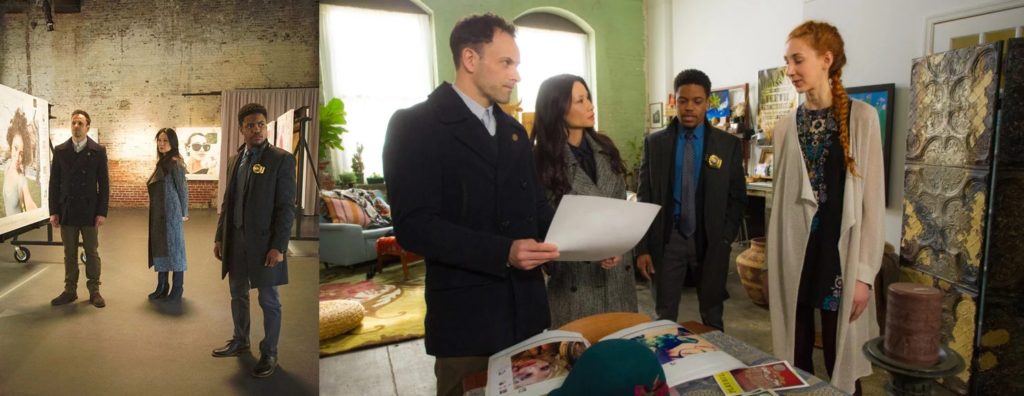
Sherlock, Watson, and Detective Bell visit the studio of a performance artist whose Instagram photo was appropriated in a Richard Prince-style art show. Courtesy of CBS.
6. Elementary, “Art Imitates Life” (2016)
Appropriation art takes center stage in this modern-day take on Sherlock Holmes, starring Johnny Lee Miller as the great detective and Lucy Liu as his partner, Watson.
It’s Watson who realizes that Phoebe Elliot, the murder victim in their latest case, is currently featured in a gallery exhibition that transparently apes Richard Prince‘s controversial Instagram series.
“Ephraim Hill is an appropriation artist from Portland. He pulls images from social media and then recontextualizes them as art,” Watson explains.
Much like Prince, Ephraim isn’t hugely popular with some of his unwitting subjects. One even concocts a revenge plan straight out of the Suicide Girls’s real-life plan to get back at Prince—a scheme to sell her own photographs of his appropriated images for $50 outside the show. But she’s quickly ruled out as a murder suspect: “I would never kill anyone… I’m a vegan.”
The final resolution involves a crooked lab technician falsifying DNA test results. But in this murder mystery, it’s art that truly cracks the case—the victim’s appropriated selfie was stolen and replaced with a forged copy to hide evidence from a previous crime.
Believability rank: 6/10
7. Louie, “Pamela, Part 2” (2014)
Art features here as the prop for Louis C.K.’s misanthropic everyone-is-against-me worldview. As he continues to woo love interest Pamela (Pamela Adlon), Louie’s art gallery date offers a poker-faced send up of art as a series of intellectual booby traps: an all-black painting titled Jews; a living model, standing statue-still and clad in a diaper, titled Diarrhea; and a cartoonishly large button that says “Press,” but that triggers a voice to shout out a racial slur when Louie obliges, causing the whole gallery to pause in shock. The trip reaches a particularly nihilistic climax as the two happen upon a final gallery that appears to contain a pile of dead bodies, a sight that they take in as if it’s no more than you’d expect.
It’s tough to judge this one since it’s a send-up. But the gallery scenes do feel like they hit something—the kind of permissive wackiness of art. Also: For a dismissive parody, it captures the pleasures of a gallery crawl better than most, as Louie and Pamela wander, distractedly enjoying each other’s bemusement as they try to figure out just what is going on.
Believability rank: 7/10
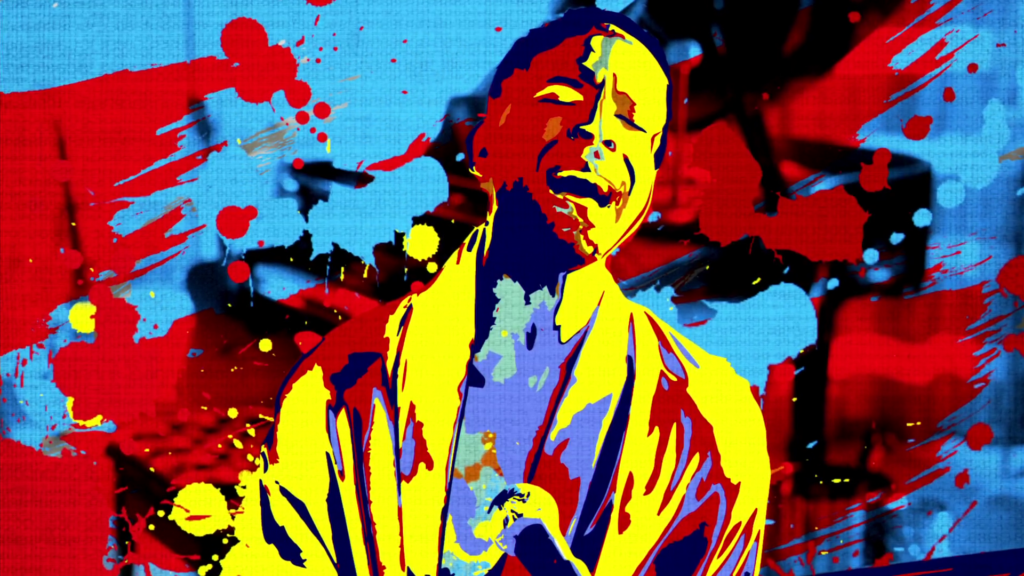
Chase One’s painting of Jamal on Empire. Courtesy FOX.
8. Empire, “Poor Yorick” (2016)
Jealousy and drama are Empire‘s bread and butter, so it’s no surprise that the presence of artist Chase One (Adam Busch), described in the casting materials as “a sexy, gifted, avant-garde gay artist,” leads to tension, both personal and professional, for the Lyon clan.
Chase comes on board to photograph Jamal (Jussie Smollett) for the singer’s upcoming Rolling Stone cover. Jamal calls him “the new Warhol.” Later, the artist returns with the finished product, a paint-splashed composition in primary colors. (His thing is painting over photographs.) The piece appears just in time for Jamal’s video shoot with younger brother Hakeem (Bryshere Gray). It’s a high-concept affair described as “a post-apocalyptic Black Panther theme with the brothers fighting police oppression.”
The jealous Hakeem derides the work as “tacky and ugly,” snatches a knife off the craft services table, and stabs the canvas in the neck. Chase isn’t mad, however, and denies that the work is ruined. “This is the painting now. This is what it has to say,” he says.
Believability rank: 7/10
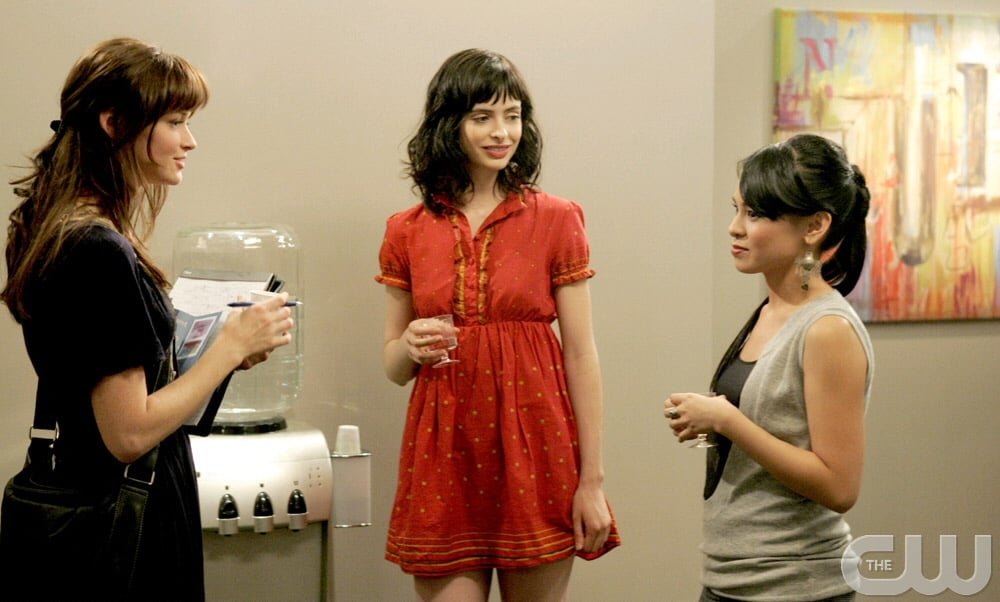
Rory makes friends at an art opening on Gilmore Girls. Courtesy of the CW.
9. Gilmore Girls, “‘S Wonderful, ‘S Marvelous” (2006)
As editor of the Yale newspaper, Rory Gilmore (Alexis Bledel) winds up filling in for a staffer who bails on covering a student art show. Upon arriving, she is promptly trolled by the art-world cognoscenti, in the form of art students Olivia (Michelle Ongkingco) and Lucy (Krysten Ritter).
Lucy: She’s touching your art.
Olivia: What are you doing? Are you actually drinking that water?
Rory: Oh, um, I didn’t know it was art, I thought it was just a water cooler. There’s no sign or anything.
Olivia: “Just a water cooler.”
Lucy: That’s her self-portrait. I’m kidding! It’s just a water cooler.
The girls admit to messing with Rory, but Olivia is, in fact, an artist with a work in the show. “I do stuff with found objects,” Olivia explains. “I mean, you could call it trash, but that’d be kind of negative.”
The other works on view include a light bulbs sculpture that periodically turns on in blinding fashion, a robot wearing underpants that Rory thinks she likes, and a work titled Girl Without Clothes.
While Rory may not come out of the experience with an enduring love of contemporary art, she does make a couple of friends on the bargain, which isn’t the strangest thing to ever happen at an art opening.
Believability rank: 8/10
10. The Simpsons, “Mom and Pop Art” (1999)
In this throwback from The Simpsons’s Golden Age, Homer (Dan Castellaneta) unwittingly becomes a lauded outsider artist following a bungled attempt at installing a DIY barbecue pit. The questionable objet d’art that results garners the attention of an art dealer who displays the work in her space, facetiously named the Pretentiousaria Art Gallery. Homer is skyrocketed to art fame, and his work ends up being shown in the Louvre (Springfield’s own version of course: “The Louvre: American Style”).
Homer’s self-congratulatory schmoozing with insider-outsider artists like Jasper Johns is cut short when his new artworks are critiqued for being too repetitive of his earlier work. He and Marge (Julie Kavner) visit the Springfield Art Museum for inspiration, where a raft of comic references to iconic works of art ensues. After learning about Christo, Homer attempts something derivative: He and Bart (Nancy Cartwright) block the town’s drains and open all the fire hydrants, transforming Springfield into a Venetian paradise replete with floating zoo animals.
The episode scores points for its witty satire of art’s pretensions and for featuring an actual artist (Jasper Johns guest stars as kleptomaniac version of himself). Homer’s final art project ends up as controversial and visually stunning as any of Christo’s works—although it loses points for its dubious feasibility.
Believability rank: 8/10
11. Girls, “Bad Friend” (2013)
As the daughter of two artists, Lena Dunham is probably one of the best-equipped people in television to send up the art world. “Bad Friend” is by no means the only Girls episode to tackle the industry’s insular social codes. It is, however, the most ridiculous.
Bad-boy artist Booth Jonathan (a perfectly affected art-world name), played by Jorma Taccone, manages to convince failed gallery employee Marnie Michaels (Allison Williams) to sleep with him by forcing her to crawl inside “the best work he’s ever made.” The work is a video torture booth that plays violent footage ranging from hyenas eating dead animals to crying babies. The installation looks like what might happen if Nam June Paik was born in the late ‘80s and then had a nervous breakdown. After she is released from the chamber, Marnie tells Booth: “You’re so fucking talented.”
In her initial conversation with Booth, Marnie dismisses him as “a con man who somehow convinces people to pay way too much money for derivative art by convincing anyone who has never heard of Damien Hirst that you’re a genius.” It’s a good line—but Booth’s work doesn’t look much like Damien’s. If anything, it’s slightly more reminiscent of Tom Sachs.
Believability rank: 9/10

Master of None goes to Storm King. Courtesy of Netflix.
12. Master of None, “The Dinner Party” and “Amarsi Un Po” (2017)
Season two opens in the Italian town of Modena where Dev (Aziz Ansari) is learning to make pasta. Dev’s Italian friend, Francesca (Alessandra Mastronardi), gifts him a book of her favorite Italian artist—Maurizio Cattelan, naturally. When she visits him in New York in episode five, they head straight to the Brooklyn Museum to see Judy Chicago’s feminist masterpiece, The Dinner Party, which gives the episode its title.
Witty banter ensues, with Francesca dropping some art historical knowledge:
Dev: Is it me or do all these look like vaginas?
Francesca: Yeah, it’s kind of like saying that all these women across history have been discriminated against just because they have vaginas.
Dev: Whoa. Did this lady have a piano vagina?
Francesca: I’m never going to a museum with you again.
The piano place setting, for the record, is for English composer and suffragette Ethel Smyth.
As Dev’s feelings for Francesca become romantic, in episode nine, “Amarsi Un Po,” the two take a day trip to Storm King Art Center, in New Windsor, New York. The art museum visits are short interludes in the pair’s developing romance, but they are both important moments in the story, as Francesca pushes Dev outside his comfort zone.
Believability rank: 9/10
13. Mad Men, “The Gold Violin” (2009)
While Mad Men‘s entire seven-season run was studded with touchstones from music, literature, and fashion, this episode stands out to art enthusiasts. Bert Cooper (Robert Morse), the eccentric executive at the helm of the ad agency Sterling Cooper, has a new addition to his office decor: an orange color field painting by Mark Rothko, bought for a whopping (in mid-century American bucks) $10,000.
The canvas inspires discussion throughout the office, and everyone wants to take a look. Each of the cast’s reactions seems to reflect an essential quality in their character: Don’s new secretarial eye-candy Jane sees smudgy squares; art director Sal knows he should feel something, but can’t pinpointwhat exactly; Harry balks at the price; and Ken, who has recently published a short story in The Atlantic, waxes poetic about the spiritual resonance and breadth of feeling he finds in the chromatic canvas.
Cooper is no exception. Ever the pragmatic businessman, he says, “People buy things to realize their aspirations—it’s the foundation of our business… But between you and me and the lamppost, that thing should double in value by next Christmas.” Touché, Mr. Cooper—today the record for a Mark Rothko painting sold at auction is $84.2 million.
Believability rank: 9/10
14. It’s Always Sunny in Philadelphia, “Dee Made a Smut Film” (2016)
The episode begins, as the show always does, with the gang latching onto some kind of outlandish scheme. Here, with Dee (Kaitlin Olson) claiming her bit part in a porn film is art, Mac (Rob McElhenney) begins a crusade to prove that “the whole art world is bullshit nowadays,” arguing that “anything can be considered art.”
Mac sets out to garner artistic recognition for Charlie (Charlie Day), who is pretty much illiterate, but doodles extensively with markers, pen, and Tums. Mac surreptitiously hangs one of Charlie’s drawings on the wall, where it quickly catches the gallerist’s attention.
Meanwhile, Frank (Danny DeVito), who claims he “used to hang with an art crowd in the ’70s,” is enlisted to pose as a high society type and convince the gallerist to come to an opening for Charlie’s art at their bar. (Cricket, a homeless drug addict, is enlisted to “be the face of Charlie’s art” and provide an intriguingly tragic backstory.)
The episode’s highlight is Frank’s “subtle” disguise: a flamboyant, bewigged Andy Warhol character named Ango Gablogian, who pronounces everything on display as “bullshit” or “derivative,” only to buy the portable air conditioning unit.
As much as the gallerist is enthralled by “Ango,” she isn’t interested in buying anything from the gang. “I rent an art gallery, or more accurately, my parents rent one for me,” she admits.
Believability rank: 10/10
15. Sex and the City, “Pilot” (1998)
In the 1998 pilot of Sex and the City, art is used, primarily, as a surefire tool to pick up women. The episode includes this epic pick-up line: “Want to go back to my place to see the Ross Bleckner?”
The line is uttered by “toxic bachelor” Capote Duncan (Jeffrey Nordling) in his effort to persuade gallerist Charlotte York (Kristin Davis) to come home with him. She balks—until she learns some essential information.
Charlotte: “What year was it painted again?”
Capote: “’89.”
Charlotte: “Well… maybe just for a minute.”
The plot keenly captures a particular brand of New York finance guy for whom art is little more than a trophy. It also reminds us that there was a moment in time when Ross Bleckner was a big enough name that the mere mention of him could conceivably get a woman to sleep with you. More importantly, it gets the nitty-gritty right. Charlotte tells Capote that “this could easily go for $100,000.” According to the artnet Price Database, a very similar work sold in 2007 for $121,000. Someone give that writer a raise!
Believability rank: 10/10
Follow artnet News on Facebook:
Want to stay ahead of the art world? Subscribe to our newsletter to get the breaking news, eye-opening interviews, and incisive critical takes that drive the conversation forward.
SHARE
Article topics


